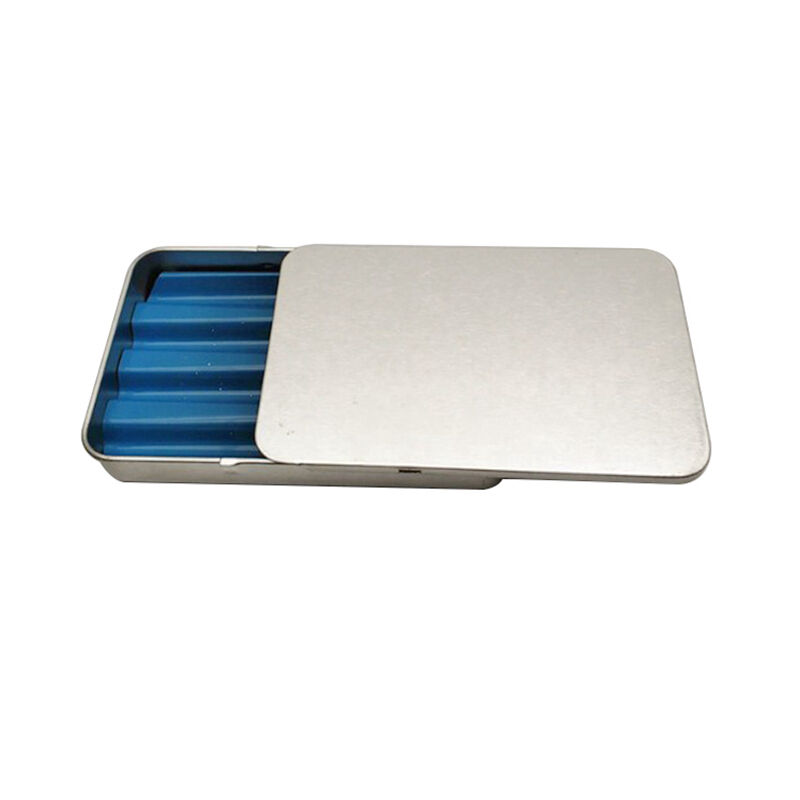introductio
Per decennia, tinnae customatae late adhibitae sunt ad sarcinas multorum mercium, ab cibo et potu ad cosmetica vel collectabilia. Materia electa pro tinis customatis directe afficit non solum eorum durabilitatem et quamdiu durabunt, sed etiam eorum capacitatem ad tuenda contenta necnon eorum impactionem in ambitu. Hic articulus explorat diversas materias in productione tinnae customatae adhibitas et spectat quid significet unaquaeque materia.
Genera Materiarum in Productione Tinnae Customatae Adhibita
Diversae materiae communiter ad productionem tinnae customatae adhibentur: unaquaeque proprias proprietates habet, et ita in diversis casibus applicari potest. Exempli gratia, in casu tinnae nunc duos ex tribus possibilitatibus pro tinplate spectabimus: Tinplate
Tinplate, materia ultra-tenuis ferrea tinni obducta, una ex materiis traditio maxime ad productionem tinni adhibitis est. Solutio oeconomica cum bona malleabilitate praebet. Id est, facile formari potest et in varias magnitudines vel formas per pressionem materiae in formas vel moldes confici potest.
Tinplate Electrolyticum
Tinplate electrolyticum forma superior tinplate est in qua obductio tinni electrolytice applicatur, dando superficiem leniorem et uniformiorem. Saepe pro sua superiori impressibilitate electum, haec materia praecipue praeferitur ut optio pro tinni complexae consilii vel notae.
Tinplate Cannae Chromium (CCT)
Ferrum canned chromium, etiam notum ut ferrum sine tinni, habet tenuem stratum chromium pro obductione tinni. Proprietates anti-rust excellentes praebet et ad omnia quae in pluteo stare debent vel magis exposita sunt ad peiora condiciones adhibetur.
aluminium
Aluminium est materia levior et infinitum recyclabilis quae in productione tin custom crescente adhibetur. Eius naturalis resistentia ad corrosionem et proprietates non-reactivas eum optimae electionis faciunt pro packaging ciborum, cum contenta nullum gustum aut odorem ab eo accipiant.
Materiae Bimetallicae
Materiae bimetallicae duos metalla diversa coniungunt ut singularem proprietatum coniunctionem praebeant. Exempli gratia, lamina aluminium tin-plated recyclabilitatem et levitatem aluminium cum aspectu et sensu tradito stanni coniungere potest.
Beneficia Diversorum Materiarum
Unaquaeque materia sua beneficia praebet, quae electionem materiae pro particularibus applicationibus tin custom afficere possunt.
A. Cost-Effectiveness
Stannum cannulatum chromium et quaedam materiae bimetallicae, in particulari, efficaciter costant, faciens tinplate aptum pro productionibus altis ubi budget est factor maximus in eius electione.
B. Durabilitas et Longitudo
Chromium cista ferri et quaedam genera materiae bimetallicae meliorem durabilitatem et resistentiam ad corrosionem praebent. Id vitam tinni extendit dum contenta recentia per longiora tempora curat.
C. Proprietates Barrier
Proprietates barrierum materiarum tinni sunt cruciales ad tuenda contenta ab aere, umore, et lumine. Electrolytic tinplate et aluminum sunt valida barrier quae qualitatem suam per tempus servant.
D. Recyclabilitas et Impactum Ambientale
Tam aluminum quam tinplate sunt materiae valde recyclabiles, et ita etiam optiones amicae ambiens. Electio materiae adiuvare potest ad implenda proposita sustinendi societatis et ad attrahendos clientes conscios de ambitu.
E. Customizabilitas *** Sine Impedimento Performance
Capacitas ad imprimendum vel decorandum materias interdum significans est pro tin custom producendo. Electrolytic tinplate, exempli gratia, technologia picturae picturatae habet quae imaginem notae acutam et vividam tribuit.
Factorum Electio Materiae
Plures sunt factores qui electionem materiae pro productione tin custom influere possunt.
A. Genus Producti
Natura producti packaging saepe determinat quam materia adhibetur. Exempli gratia, cibusproductsmateriam cum bonis proprietatibus barrier requirit, dum productum cosmeticum vere aesthetica et opportunitates branding aestimat.
B. Limitationes Budget
Factores budgetarius possunt esse magnae influentiae in electione materiae, cum materiae pretiosiores, ut aluminium vel quaedam bimetalla, tantum pro productis premium vel cum proprietatibus particularibus necessariae adhibentur.
C. Propositum Sustentabilitatis
Societates cum robusta commitment ad sustentabilitatem bene eligere possunt materias cum alta recyclabilitate vel eas quae environmentaliter responsabile procuratae sunt.
D. Considerationes Aestheticae
Aestheticum appellum materiae est importante, praesertim pro productis in quibus packaging est pars integralis appellationis producti.
Caracteristicae Processus Productionis et Considerationes Materialium
Processus ad aliquid producendum adhibitus etiam potest influere in tua materiae electione. Quaedam materiae facilius tractari possunt in processibus ut profunda trahendi aut stampandi, ita ut et efficientia productionis et qualitas producti finalis ex hoc beneficium capere possint.
Casus Studiorum et Exemplum
Spectando exempla realia tinorum ad modum factorum in actione potest praebere utilia indicia pro materiae electione. Exempli gratia, notam chocolatum luxuriosam potest eligere tinplate electrolyticum pro alta qualitate typographiae; dum societas quae potiones in cans facit aluminium considerare potest ob eius levitatem et recyclabilitatem.
conclusio
Electio materiae pro productione tinorum ad modum factorum vitalis est et afficit sumptus, qualitatem, sustinabilitatem et producti perficiendi. Cognoscendo beneficia et proprietates cuiusque generis materiae in foro praesto, societates electionem informatum facere possunt quae ad eorum necessitates vel proposita particularia accommodat.

 EN
EN
 AR
AR BG
BG HR
HR CS
CS DA
DA NL
NL FI
FI FR
FR DE
DE EL
EL IT
IT JA
JA KO
KO NO
NO PL
PL PT
PT RO
RO RU
RU ES
ES SV
SV CA
CA IW
IW ID
ID LV
LV LT
LT SR
SR SK
SK SL
SL UK
UK VI
VI SQ
SQ HU
HU TR
TR FA
FA MS
MS GA
GA CY
CY LA
LA